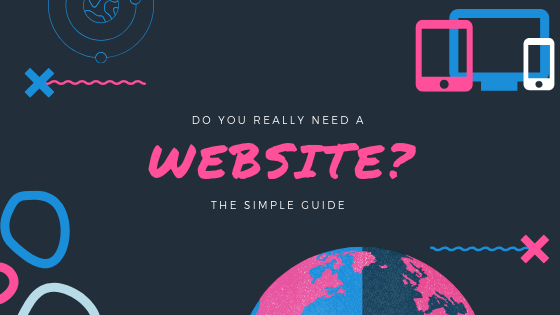
In the world of digital marketing, the number one misconception that I’ve come across is that you don’t need a website for your business. Those who have this misconception seem to think having a Facebook or Instagram is all they need. However, social media is actually a tool that should be used to drive traffic back to your website in order to make a sale.
Your website is the backbone of your online presence. If you don’t have one, your online presence would be weak. This should be the central hub of everything that you do online. Your social media profiles should link back to your website, your ads should direct people to your website. This should be where potential clients convert.
Having a website also increases the chances of a conversion, be it by getting more eyes on your company or by being convenient for your potential clients. It boosts your online presence by getting you ranking in search engines, like Google. Certain pages on your website also boost your relationship with clients by providing them information about your company and information that they are explicitly looking for.
Though you should have a website, you should not have a poorly designed website. There are important features that should be included in every website. Two that are generally agreed upon are,
- Easy to navigate.
- Your user should never have to wonder where to find important information like contact information, product or service information, and how to purchase.
- Call To Actions
- You need to tell the user how to make that next step. Whether it’s filling out a form, calling the location, or writing an email.
There are five main pages that most people tend to need for their website; Home, About, Contact, Blog, and Products or Services. Of course, some companies will need more pages such as a Frequently Asked Questions page, or a Portfolio Page.

What should be on the Home Page?
The way we break this down for our clients is that the Home page should basically be a sneak peek at the other main pages on the site. We advise that the home page should have a section at the top, generally a slider, that can show new deals, products, services, or other changing information. There should also be some shortened sections for the about, types of products/services, contact, blog, or other main pages.

What should be on the About Page?
The about page is the second most viewed page. Here is a solid case study that shows this. This is where you can build a personal connection with the potential customer. We tell our clients to imagine that they’re sharing the most important things about themselves. Often, this will lead to sharing the values that they have and can then expand upon, leading the potential customer to feel as if they know them. You should also include any certifications or awards that the company has. Often, people will include a “fast stats” section where they list three or four stats about their company, like how many clients they’ve had, how many hours they’ve spent, or how many cups of coffee it’s taken.
What should be on the Contact Page?
On the contact page, you should have all possible communication routes. Often this is the physical address, phone number, and email address or a contact form. You can add a google map to this page, if you’d like. The most important thing would be to make sure that the phone number and email are clickable. Use the “tel:” and “mailto:” link modifiers to do this, for example “tel:321-522-8962” or “mailto:team@blueshiftwebservices.com”.
The things you should take away from this article would be:
- You need a website for your business, social media is not enough.
- It needs to be well designed for the user experience.
- Content matters.

